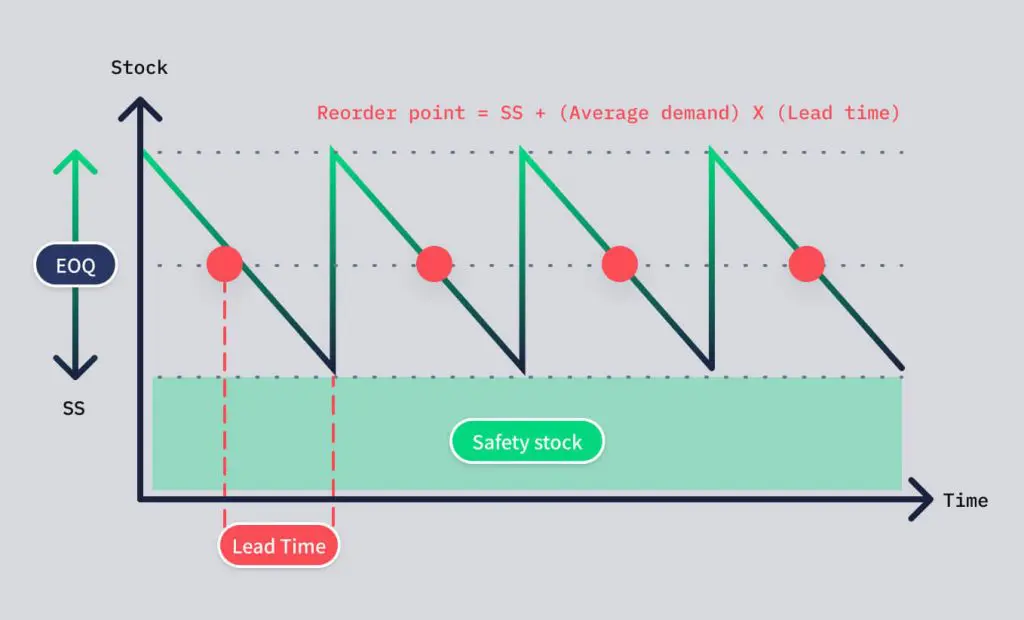In the bustling world of supply chain management and logistics, stock control takes centre stage as the driving force behind a company’s inventory management. But what is it? Stock control ensures that a company’s stock level remains within certain parameters, so as not to run into issues of overstocking or running out of stock.
Various studies have surmised inventory management statistics from the 2020s, proving the importance and effectiveness of stock control. One example explains that stock control aiming to reduce stock-outs and overstocks can lower inventory costs by up to 10%.
Contents of this article will include stock control methods and benefits, highlighting the importance of its implementation.
What is Stock Control?
Stock control, also known as inventory control or inventory management, can be defined as the process of managing and monitoring a company’s inventory levels to ensure that optimal stock levels are maintained. This is often applied to each, individual product line of a company. One of the primary facets of stock control is the stabilisation of inventory storage costs. This occurs through the achievement of the culmination of smaller goals, such as minimising stock-outs, reducing excess inventory and improving overall operational efficiency. Read through Intuendi’s blog about Excess Stock to learn more about why it should be avoided at all costs, and what can be done to execute this.
What are the Benefits of Stock Control?
Stock control carries a multitude of benefits along with its implementation. Not only does stock control bring about primary benefits, it also aids in the resolution of certain issues. Let us assess the ways in which stock control serves as an important feature to business operations:
Ensuring the correct amount of stock is kept: This refers to the reduction of over or understocking. A robust stock control system ensures that the necessary raw materials and products are on-hand to complete business operations without running out of stock, or having too much inventory leftover. Both instances cause a loss of revenue, whether the source is attributed to not meeting customer demand, or wasting business capital on overstocking and unnecessary warehousing and storage costs. Coupled with demand forecasting based on accurate and historical data, stock control provides more reliable reads on the amount of inventory needed and when.
Enhanced organisation, productivity and efficiency: A clear stock-management strategy allows for precise planning and organisation of resources. A warehouse that is easy to navigate reduces time spent on procuring materials and products, which therefore, allows more time for employees to focus on other, more important aspects of the supply chain process. Enhanced organisation and productivity allows for more streamlined operations with fewer mistakes, resulting in overall business operations efficiency.
Missing stock: Having an effective stock management system in place allows businesses to account for each and every item of inventory within its warehouse. This allows for missing stock to become easier to track-down, and provides the added benefit of acting as a deterrent for theft.
Customer satisfaction: Mentioned in almost all of Intuendi’s blogs, customer satisfaction should sit at the heart of all companies. A happy customer is a loyal customer, and a loyal customer brings more revenue. Excellent stock control systems allow for processes to move swiftly, allowing customers to receive their orders and products at a faster rate, increasing their overall customer experience and satisfaction.
What are the Four Methods of Inventory Control?
Now knowing the benefits of stock management, I’m sure questions of how it can be achieved are being raised. Below are four popular methods of inventory control explained:
Just-in-Time (JIT) Inventory Control: Designed specifically to reduce inventory storage costs, the JIT inventory control system ensures that enough inventory is available to meet customer demand, and that enough stock can be ordered in a sufficient amount of time to meet the next period of customer demand. JIT focuses on having the right items delivered in the right quantities in the right time. By closely aligning inventory levels along with actual demand, JIT reduces storage costs, minimises the risk of excess or obsolete inventory, and increases operational efficiency. This approach requires strong coordination of suppliers, a reliable supply chain, as well as steady customer demand.
ABC Analysis: This technique is generally used to categorise items based on their value, which informs how inventory management efforts should be prioritised. This effort classifies items into 3 categories – namely, A, B, and C, with the highest valued items starting in A and decreasing as we move down the list. Category A typically represents a smaller percentage of the overall inventory, but contributes a significant portion of the total value. Category B has more moderate value and inventory significance, and Category C items are often more numerous, but contribute a smaller portion of the overall value. This helps businesses place more focus and attention into managing high-value items, and thus, optimising stocking levels and ordering policies accordingly.
Economic Order Quantity (EOQ): Focussed on using only the resources that are necessary in order to balance inventory holding costs and ordering costs, this method finds the optimal order quantity for suppliers to meet customer demand. This formula-based approach considers factors such as demand, unit cost, and holding and ordering costs in order to minimise the total costs. EOQ helps to minimise overstocking and all of the issues explained that is brought along with it.
Material Requirements Planning (MRP): Using production schedules and demand forecasting software to determine material requirements, MRP considers the timing and quantities of production orders, lead times for materials, and dependencies between different components to calculate the exact materials needed for each production run. The coordination of the above elements ensure that the right materials are available at the right time to support production and to reduce stock-outs. It also aids in avoiding excessive inventory of raw materials, streamlining manufacturing processes and optimising production efficiency.
Why is it Important to Have a Stock Control System?
Efficient stock control systems should not be an intimidating feat. Through understanding the benefits, as well as the different methods, and which method would work best for you and your business, it can be achieved. And with the help of Intuendi’s inventory management software, this dream can be achieved even quicker!






